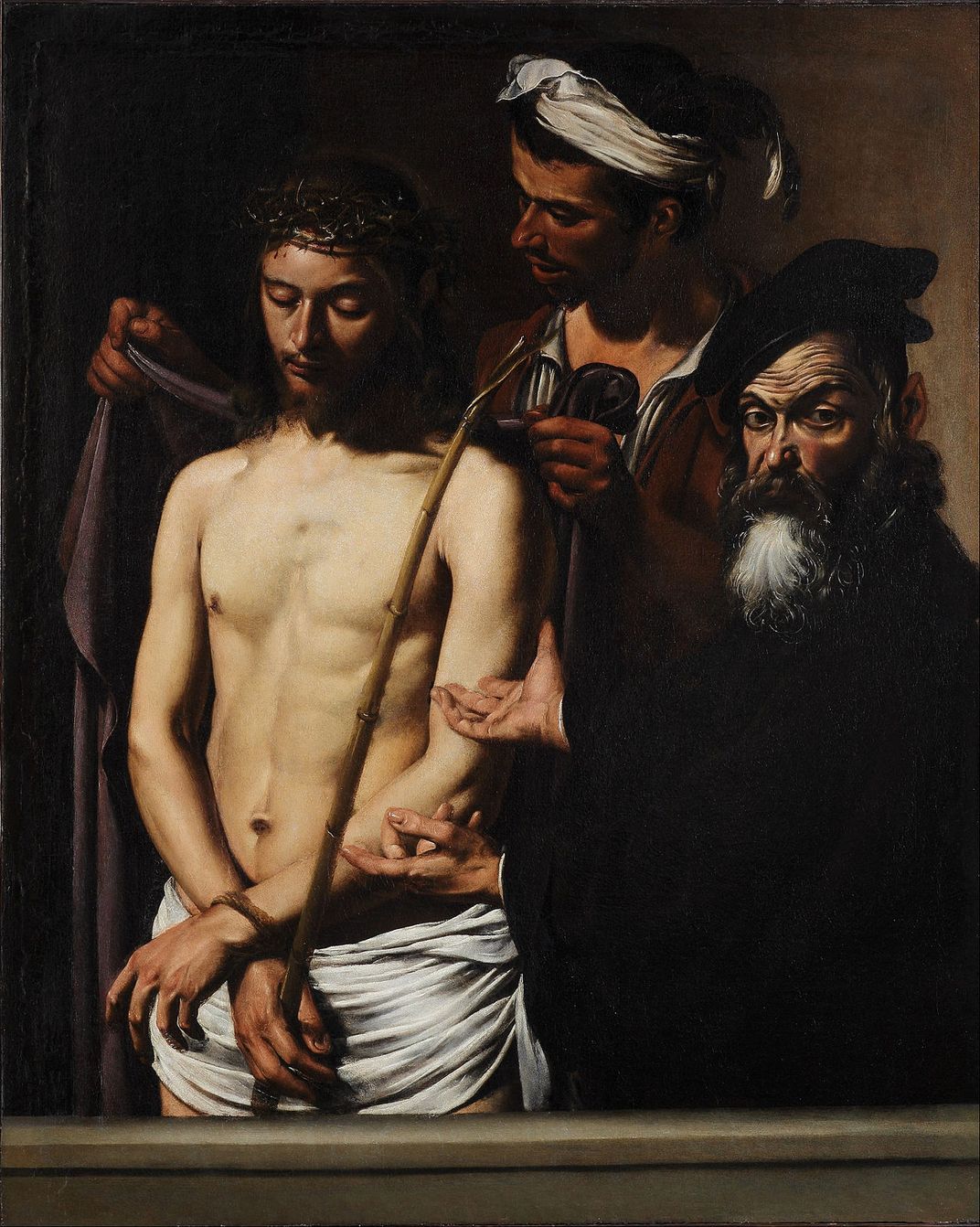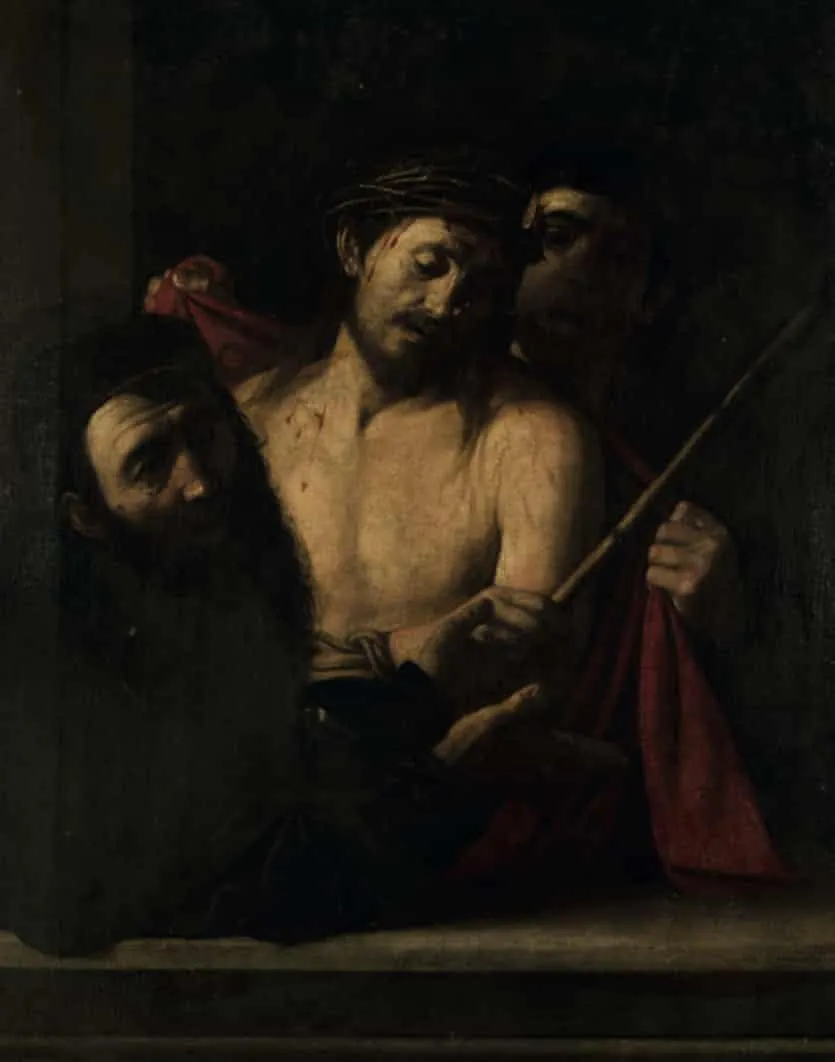Baroque Painting Almost Sold for €1,500 May Be a Caravaggio Worth Millions
Spanish authorities halted the sale after identifying “sufficient stylistic and documentary evidence” linking the work to the Old Master
:focal(400x224:401x225)/https://tf-cmsv2-smithsonianmag-media.s3.amazonaws.com/filer/9b/32/9b32f0fb-0dc6-460a-97e8-c50c45dcafe5/cara.jpg)
Last week, the Spanish government halted the sale of The Crowning With Thorns, a depiction of the bloodied Christ attributed to the circle of 17th-century Spanish artist José de Ribera, just one day before it was set to go under the hammer at Madrid-based auction house Ansorena.
As Aritz Parra reports for the Associated Press (AP), Spain’s culture ministry placed an export ban on the religious scene in response to scholars’ claims that it may actually be a lost work by the acclaimed Italian Renaissance artist Michelangelo Merisi da Caravaggio.
If confirmed as a Caravaggio, the painting—whose suggested starting price in Thursday’s sale was €1,500 (around $1,790)—would be worth “dozens of millions, … if not more,” according to the AP.
“Given the speed at which all this has been happening, we now need a thorough technical and scientific study of the painting in question,” a ministry source tells the Guardian’s Sam Jones and Lorenzo Tondo. “There needs to be an academic debate about whether the Caravaggio attribution is plausible and accepted by the scientific community.”
The 44- by 34-inch painting shows Christ bleeding and bedraggled in the moments leading up to his crucifixion; he averts his gaze as an onlooker places a red cloak over his shoulders.

Per the New York Times’ Scott Reyburn, the scene’s subject is known as Ecce Homo—a reference to the Latin words said by Pontius Pilate when presenting the scourged Christ to the crowd. (The phrase translates to “behold the man.”) A 1605 depiction of the biblical tale on view at the Galleria Palazzo Rosso in Genoa, Italy, is generally attributed to Caravaggio, albeit somewhat controversially.
Scholars had previously attributed this Ecce Homo to Ribera because he often mimicked Caravaggio’s painting techniques. Born in Spain in 1591, Ribera worked in the tenebrist style pioneered by Caravaggio, emphasizing sharp contrasts between light and shadow in his creations. According to Encyclopedia Britannica, the artist was probably a young man when he moved to Italy, where he established himself as a leading painter by creating realistic Baroque works that depicted both religious and mythological subjects.
Caravaggio, meanwhile, is widely celebrated as one of the most significant painters of the Baroque period. Born in Italy in 1571, he created epic scenes of such subjects as Judith beheading Holofernes and the Roman god Bacchus.
Experts at the Prado National Museum alerted authorities of the potential misattribution after finding “sufficient stylistic and documentary evidence” linking the painting to Caravaggio, says the culture ministry in a statement quoted by the Art Newspaper’s Gareth Harris.
Ana Marcos of Spanish newspaper El País reports that multiple leading scholars, including Isabel Mateo, an art historian who first assessed the work around ten years ago, and world-renowned Caravaggio specialist Maria Cristina Terzaghi, support the newly proposed authorship. Terzaghi cites the painting’s size, technical aspects and similarities to other Caravaggio works (including Madonna of the Rosary) as evidence.

“There is no doubt about the attribution,” Terzaghi tells the Times.
Some experts, however, remain unconvinced.
“It’s not a Caravaggio,” 17th-century Italian painting scholar Nicola Spinosa tells the Corriere della Sera newspaper, as quoted by the Guardian. “In my opinion the painting is a high-quality Caravaggesque,” or artwork painted in the style of Caravaggio.
“It could be that, in the end, it’s a painting by a disciple of Ribera, as it was said,” Spanish Culture Minister José Manuel Rodríguez Uribes tells the AP. “Hopefully it will be a Caravaggio. But, in any case, our decision ... is very appropriate because the painting is very valuable.”
The Crowning With Thorns isn’t the only potential Caravaggio to reemerge in recent years. In 2014, the owners of a home in France found a painting purportedly by the Old Master beneath a mattress in their attic. A New York–based collector purchased the work, titled Judith and Holofernes, two days before it was set to go on auction in 2019.
How much the buyer paid is unclear, but as Caroline Goldstein wrote for Artnet News at the time, his offer was reportedly “exceptionally more” than the planned opening bid of €30 million (roughly $34 million).
/https://tf-cmsv2-smithsonianmag-media.s3.amazonaws.com/accounts/headshot/Isis_Davis-Marks_thumbnail.png)
/https://tf-cmsv2-smithsonianmag-media.s3.amazonaws.com/accounts/headshot/Isis_Davis-Marks_thumbnail.png)